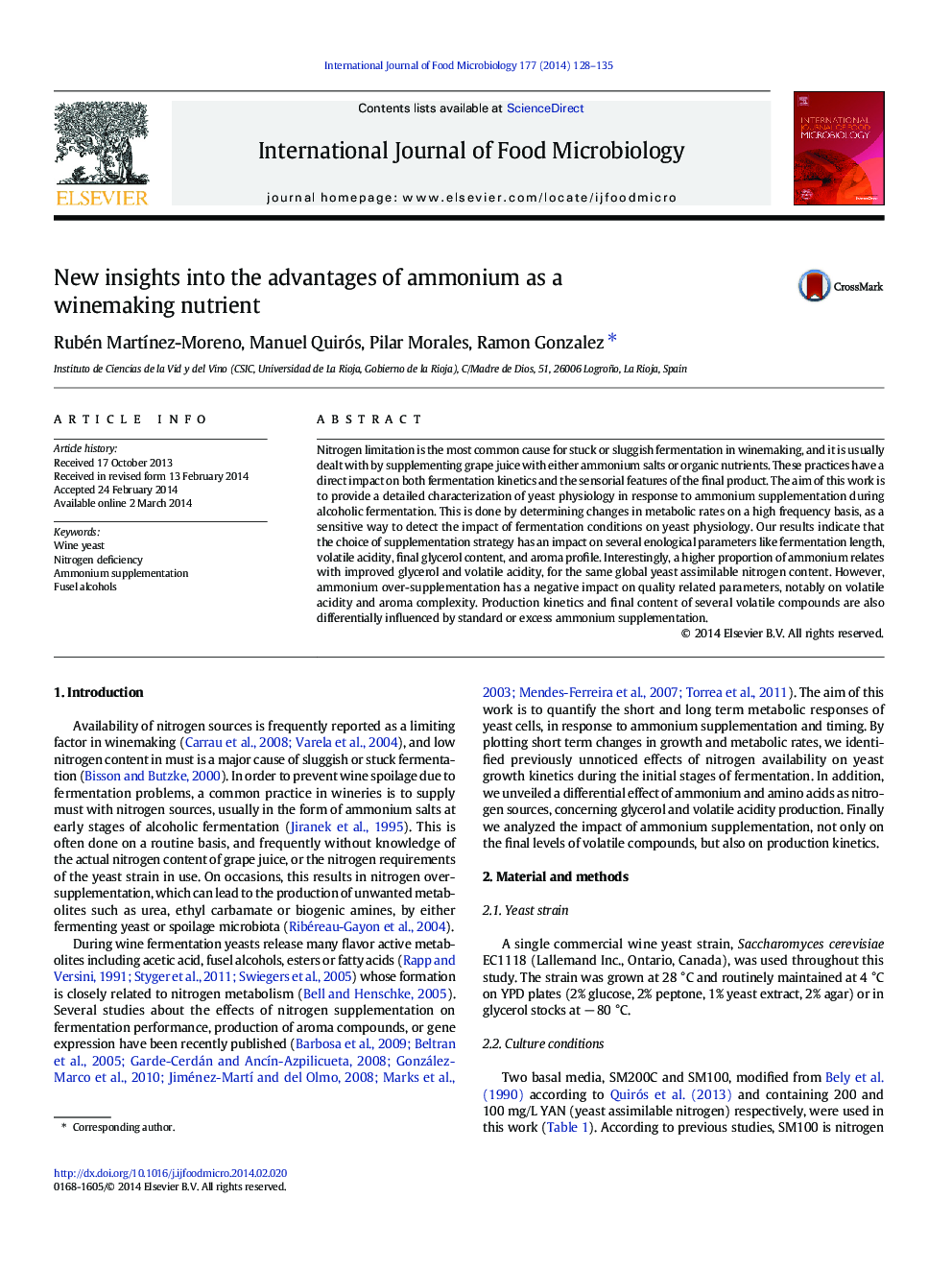| کد مقاله | کد نشریه | سال انتشار | مقاله انگلیسی | نسخه تمام متن |
|---|---|---|---|---|
| 4366979 | 1616605 | 2014 | 8 صفحه PDF | دانلود رایگان |
• Yeast growth slows down under severe nitrogen limitation.
• Ammonium is advantageous over complex nitrogen sources for specific purposes.
• Improved glycerol content and volatile acidity are related to ammonium nutrition.
• Excess ammonium is detrimental for volatile acidity and aroma complexity.
Nitrogen limitation is the most common cause for stuck or sluggish fermentation in winemaking, and it is usually dealt with by supplementing grape juice with either ammonium salts or organic nutrients. These practices have a direct impact on both fermentation kinetics and the sensorial features of the final product. The aim of this work is to provide a detailed characterization of yeast physiology in response to ammonium supplementation during alcoholic fermentation. This is done by determining changes in metabolic rates on a high frequency basis, as a sensitive way to detect the impact of fermentation conditions on yeast physiology. Our results indicate that the choice of supplementation strategy has an impact on several enological parameters like fermentation length, volatile acidity, final glycerol content, and aroma profile. Interestingly, a higher proportion of ammonium relates with improved glycerol and volatile acidity, for the same global yeast assimilable nitrogen content. However, ammonium over-supplementation has a negative impact on quality related parameters, notably on volatile acidity and aroma complexity. Production kinetics and final content of several volatile compounds are also differentially influenced by standard or excess ammonium supplementation.
Journal: International Journal of Food Microbiology - Volume 177, 2 May 2014, Pages 128–135
